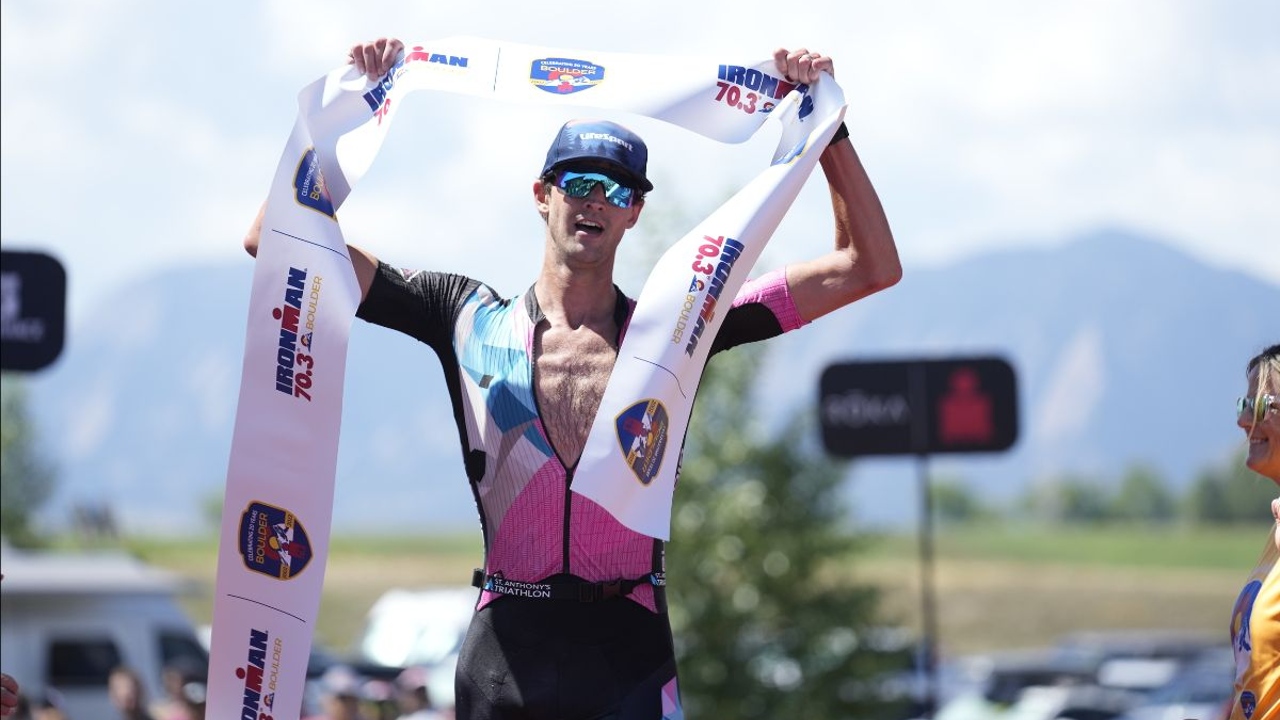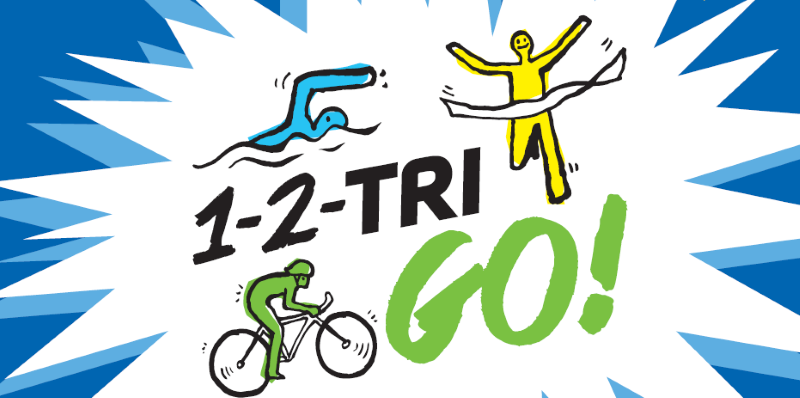We caught up with Matt Sharpe, a longtime member of triathlon BC, an Olympian in triathlon, and 70.3 Champion for a Q&A about the current High Performance world, along with some history of his own high performance pathway. Matt also writes The Tempo News – a twice-weekly email newsletter featuring the biggest news and best training tips to make you faster! Subscribe at thetemponews.com!
Q: You have been competing in triathlons for quite some time! Can you share a bit about how you got into triathlon, and what it was like competing from the BC Games up to the Junior World Championships?
A: I did my first triathlon at the 2002 Comox Valley Tri-K. I was a competitive swimmer and a family friend who was a triathlete encouraged my parents to sign me up!
I obviously loved the sport from the beginning and was also inspired by Simon Whitfield’s gold medal in Sydney. With the support of my parents I just kept chasing every step in the high performance ladder. BC Games was a massive highlight of my youth and allowed me to connect with so many awesome triathlon peers. Same with Canada Games.
Eventually I reached the pinnacle of Junior racing and competed at the World Championships in 2009 and 2010. Where at the time my ninth place finish was among the best ever for a Canadian male. Competing on that stage gave me the confidence to know I had the talent and drive to pursue elite racing.
Q: As an Elite you raced internationally for 10 years before qualifying for the Tokyo Olympic Games, can you share what those years were like, and what you focused on to keep progressing towards the Games?
A: Looking back on my years as an elite it was an incredible journey where I experienced breathtaking highs and devastating lows. I learned how to perform at a very high level under intense pressure, how to create opportunities that allowed me to race professionally, and made lifelong memories with exceptional friends.
It also allowed me to meet my incredible wife, US Olympian Kirsten Kasper.
The early U23 years were fraught with injury and missed opportunities. However, I would continue to improve and show glimpses of future success.
Once I learned how stop getting myself injured I was able to become a national team stalwart and hit career milestones including a podium at the 2016 Montreal World Cup and two top 20’s at World Championship events.
Staying consistently healthy was ultimately the reason why I was able to put myself in a position to make the Olympic team.
Q: What was your Tokyo 2020 Olympic experience like?
A: Leading into Tokyo, Triatlon Canada was going through a difficult period of poor leadership. The year before I was encouraged to open an investigation into the National coach (my former coach) based on my experiences in the centralized program. It was an incredibly stressful process that hindered my Olympic performance and put a damper on my overall Olympic experience.
We were also still in the midst of the COVID pandemic, and that made that games experience unlike any other.
That being said, I did my best to make the most of my time in Tokyo. I raced my heart out in the individual and team relay events and soaked up as much of the Olympic experience as possible.
It was a childhood dream realized and I now proudly carry the title of Olympian for the rest of my life.
Q: From your experience watching the Paris 2024 Olympics, can you share some thoughts around how the Olympic Triathlon has evolved over the years, and Canada’s performances?
A: Being in Paris was a privilege and it was incredibly fulfilling seeing my wife achieve her own Olympic dream and cheer on the Canadian athletes.
The Olympic triathlon is one of the most interesting races in the sport and Paris was no different. Because there are less athletes on the start line it doesn’t always play exactly like a typical World Series race. And with the addition of the river current it created even more chaos on race day.
Ultimately the goal of federations like Triathlon Canada is to win medals, or at the very least show promise of future medals.
On the men’s side we saw Tyler Mislawchuk have his best-ever result, and Charles Paquet showed he is a legitimate medal threat in 2028 with a 13th place finish on debut.
On the women’s side it was disappointing to only have one athlete qualify for Paris. That meant we didn’t even have a relay team on the start line. We used to be a nation that had upwards of 4-5 women battling for the 3 available Olympic slots so Triathlon Canada really needs to understand why we are in this position, and find solutions to ensure we have a strong women’s cohort in LA and beyond.
Q: You have an interesting insight into two National Sport Organizations; having competed for Canada, and being married to USA Olympic Triathlete Kirsten Kasper … Can you share some of the similarities and differences between the USA and Canada Olympic pathway?
The obvious difference is the amount of resources available to the athletes. USA Triathlon serves a population 10x greater than Canada so they have more money available.
USAT for better or worse has always been incredibly decentralized in terms of its high performance structure. They do not have a centralized training center or a national coach like Canada has. The athletes receive a set amount of funding based on performances and they are free to decide how they use it.
We’re starting to see Canada move towards that model and in my opinion it’s probably the best option given more limited high performance resources up north. Let the athletes vote with their feet.
Looking ahead to LA, what are some things that Canada can do to give the best chance of qualifying the maximum individual starters and a Team Relay?
Ultimately to get on the start line at the Olympics you need to make a lot of start lines before then. The athletes who plan on making a push for LA need to take ownership of the decisions around training and avoid losing too much training and racing opportunities to injury.
We’ve seen a lot of our best talent, especially on the women’s side, achieve incredible results two years out from the games and by the time the Olympics actually come around they are too injured to compete or just hanging on by a thread.
But should qualifying the maximum amount of athletes actually be the goal? If I was a federation would I rather have six athletes with the best result in 27th place? Or one athlete on the podium?
The goal should be to show up to LA with a cohort of strong athletes who can aim for a top performance in the relay, or have a designated podium potential athlete(s) who you can build a team around.
Having athletes with podium potential, or ones who show genuine future podium potential can be effectively marketed to funding agencies and build excitement and interest among the wider triathlon community.
Q: For the next gen athletes, the athlete’s long listed for LA 2028 and targeting Brisbane 2032, who are graduating out of Junior or already competing on the Elite International stage, what are some development and racing tips to help these athletes reach the Games?
A: At the most basic level the most important thing young athletes can do is stay injury free and make it on to as many start lines as possible. Every race is an opportunity to learn more about yourself, race dynamics and competing at a high level.
With every high-level race I competed in it became more normal to be among the best in the world thinking I could perform at that level.
Reaching the Games also requires ticking certain federation-imposed boxes. So when it became clear my path to making the Olympic team was helping another athlete try to win a medal I made a lot of racing and training decisions calibrated around that.
For young athletes maybe that means racing more World Cup events so you can guarantee yourself a spot on the start line of the automatic Olympic selection event. Or maybe you find as many relay opportunities as you can to show you are a reliable performer at that distance.
Q: For yourself, after Tokyo 2020 you switched to racing Long Distance Triathlon, what has that transition been like? What have been some highlight races?
A: After Tokyo it was time for me to move on from
short course racing. I had a lot of early success in my switch to long course as I won my very first pro race at IRONMAN 70.3 Boulder.
It has been eye-opening jumping into the long course world and seeing just how many athletes engage strictly with IRONMAN and other non-draft racing entities.
It’s actually something I would tell up and coming athletes to consider dabbling in as the reality is the commercial opportunities are significantly higher in the long course world.
Q: Where do you see the future of professional triathlon going – with so many different events (Ironman, T100, World Triathlon Championships Series, SuperTi…) where do you think the focus will be over the coming years?
A: It’s never been a better time to be a pro triathlete given the sheer volume of racing opportunities – mostly in the long course world.
IRONMAN still has the commercial and mindshare monopoly of the triathlon universe. But it’s been great to see T100 force IRONMAN to increase its investment in pro racing.
T100 has an opportunity to create a new race experience for athletes that could see them beat Ironman on value and vibes. But with the T100 investors looking for a return on capital they may not have enough time to realize their vision.
World Triathlon and Supertri are in a tough spot through no fault of their own. They are staking their claim to shorter-distance races that are becoming less in vogue with the endurance public. Athletes used to start their endurance journeys with a sprint distance. Now many of them are going straight in half and full distance events. Can enough money be made on Olympic and Sprint distance events?
Q: What’s next for you – any big plans for 2025!?
In 2025 I plan on continuing to grow the subscribers, revenue, and quality of my digital triathlon publication – The Tempo News.
Racing wise I’ll be looking to keep achieving podium performances at IRONMAN 70.3 events!
Thanks so much for your time Matt! All the best with your season next year.




